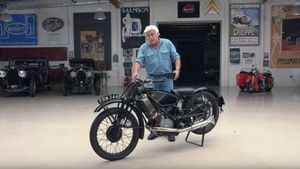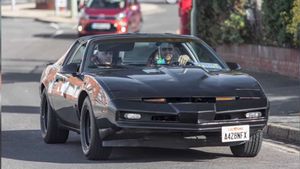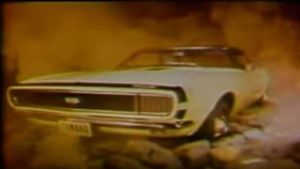Ben Coombs set out to drive from England to South Africa in a Porsche 944. With a badly behaved Porsche and all manner of terrain problems, here’s what happened…
For many Porsche fans, their love of the marque provides the means to break out of the mundane and feel alive, pushing the limits through competition or track days. However there’s always someone who feels the need to do things differently, and so when the urge was felt to take my Porsche to the limit, I decided to do so in an environment about as far removed from a track day as it’s possible to get – Africa.
I’d owned my ‘944 for five years before its big trip and it had been a brilliant daily driver, tough and enjoyable in equal measure, though with over 200,000 miles on the clock, a change was needed. However, the idea of simply selling it to a stranger didn’t seem right, and so I decided that instead, it should leave my life with a bang. Hence the idea of the trans-African road trip was born.
More on Porsche
Unfortunately, the Porsche took the idea of going out with a bang rather too literally. Seventeen days before our planned departure, a bolt worked loose, the oil pump stopped spinning, and the Porsche’s engine rapidly became a smouldering lump of scrap. Things were looking bleak...
I had two options – either walk away from the expedition which I’d been planning for over a year, or fit a completely unknown engine from a scrapyard ‘944 and set off anyway. In the spirit of throwing caution to the wind, myself and Laura – my co-driver – opted for the latter, setting course for Africa only 12 hours after the replacement engine had run for the first time.
Crossing southern England, we wondered whether we were pushing our luck by hoping we’d make it to Africa. Waiting for the ferry at Dover, with the engine misfiring and the oil warning light glowed ominously in the dark, it felt like the expedition was about to end at any moment. But the engine didn’t fail. In the first six days of the trip, it dug deep to propel us across France and Germany, over the Austrian Alps and through the Balkans, all the way to Istanbul.
Crossing the Bosphorous, we left Europe for Asia, our confidence in the scrapyard engine rising. This was just as well, given that Syria was the next country on our route - not the ideal place to be breaking down.
Across the border, the atmosphere changed. Men eyed us suspiciously while women disappeared beneath burqas, and a charged tension seemed to follow us across the impoverished desert. We followed signs for Iraq, then Damascus - where we got thoroughly lost - but eventually found ourselves on the road to the Jordanian border.

Breathing a sigh of relief, we left Syria for Jordan and the tension dissipated as we dropped down to the shores of the Dead Sea where we camped at the lowest land on the earth’s surface, 422m below sea level.
Jordan was littered with stirring ruins and sweeping roads, and it was a pleasure to speed south through – literally – biblical landscapes to the lost city of Petra, then onwards to a ferry across the Red Sea to Egypt.
An iron curtain of bureaucracy hung across the Egyptian border, and it took us fourteen hours and a hefty pile of money to get the Porsche onto African soil, but eventually we rolled into Africa, with Cape Town still 10,000 miles away.
Two weeks after leaving the UK we found ourselves driving among the sublime bulk of the Egyptian Pyramids, revelling in the moment. We’d overcome some serious odds to make it even this far; the effort and tension of doing so made the experience ever sweeter. We couldn’t linger too long however; a ferry to the Sudan was waiting on Lake Nasser, 400 miles to the south.
As we sailed into the Sudanese port of Wadi Haifa, the first big challenge of the trip presented itself – the Nubian Desert, with its hundreds of miles of gravel and sand crossed by only a few rough tracks. The Porsche celebrated by knocking off its low-slung exhaust and jamming the heater on full heat. The in-car temperature was over 50°C as we bounced through the sand, while the engine temperature hovered near the red for most of the three days it took us to cross the desert. However eventually, we breathed a sigh of relief as we reached civilisation, crossed the Nile and sped down oh-so-perfect tarmac to Khartoum.
We entered the exotic capital, built where the Blue and White Niles meet through the city of Omdurman. Shortly before, the conflict in Darfur had spilled over into the streets we were negotiating. Pitched battles had raged among the burning buildings while helicopter gunships hunted overhead. Fortunately, the only signs of burning during our visit came from the Porsche’s rapidly overheating powerplant.

We spent a few days patching up the cars in Khartoum before heading across endless plains to Ethiopia where, as soon as we crossed the border, the world changed. Sand and deserts were replaced by lushly vegetated hills, rising up into the Ethiopian Highlands. Addis Ababa was passed in a blur of potholes, and a few hundred miles took us to the Kenyan border. A hotbed of banditry and tribal conflicts, Northern Kenya’s lawless plains promised to be the Porsche’s toughest challenge.
Before leaving the border town of Moyale, we solemnly entered our details into an army logbook before joining a convoy of a few trucks, and their escort – a Kenyan Army Land Rover, reassuringly packed with firepower. At 11am the nailed barriers were moved and we entered the wilderness. Marsabit, the next town of note, was 150 muddy miles away.
Unfortunately, the Kenyan Army seemed to consider speed to be the best defence against gun-toting ‘shiftas’, and the rest of the convoy disappeared into the distance, leaving us all alone fighting through the mud.

It was demanding driving. Rain had turned the track into a rutted quagmire, and it took all my concentration to keep the Porsche pointing in the right direction, and lots of forward planning to stop it getting beached in some deep rut. Our friends, travelling with us in a Shogun, were finding it even more taxing, spinning off the road twice in the first thirty miles.
By early afternoon, we were over halfway to Marsabit, and the road conditions were improving slightly. Unfortunately, the Porsche’s reliability wasn’t; I noticed the fuel gauge was dropping quicker than usual and stopped to investigate. A shimmering kaleidoscope floated on the puddles behind the car.
I jacked the car up and squirmed beneath it. Gloopy mud caked the car’s underside, and dripped on me continuously. The problem was quickly apparent; the fuel filter mounting had broken, allowing it to drop onto the half-shaft, which had worn a hole in it. Predictably, we’d forgotten to pack a spare fuel filter.
I attempted a repair lying on my back in the mud. Gaffer tape was tried first. Mud and fuel coated every surface and it was impossible to get anything clean, but eventually, the tape stuck. Sadly, the repair didn’t work, the leak reoccurring the moment the engine was started. Next, I tried amalgamation tape and jubilee clips, but these fared little better. Team Shogun were tired of waiting, and produced a towrope. I didn’t argue.
The last 60 miles to Marsabit seemed to take forever. From succeeding on the toughest road Africa could throw at us, we were reduced to bouncing along behind the Shogun, trying to avoid the obstacles littering the track – a task which became impossible after dark. The Porsche’s unprotected underside took a battering.
The exhaust was quickly gone, removed by an errant boulder. Rocks crashed into the vulnerable sump, throwing the car disdainfully into the air. Others singled out the floorpan, and we felt the metal buckling beneath our feet. One impact twisted the car enough to reposition the driver’s seat. Limping wounded through the lawless night, Africa was routing us, and there was nothing we could do about it.
It had been dark for hours when the Porsche’s battered carcass was dragged into Marsabit. I abandoned its cramped cabin and didn’t even bother looking beneath it before retiring.Thefollowing morning we towed the Porsche to a garage with a sodden, litter-strewn inspection pit, and set to work. The fuel filter was removed and patched up, and sections of lacerated fuel line were cut out and replaced with bits of garden hose.

Somehow, by the following afternoon the car was ready to attempt the 150 mile track to the next village. The track was heavily corrugated and the ridges pounded our cars as we shook our way through the barren landscape, eventually taking their toll on the fragile Porsche. The exhaust parted company first, then the fuel filter following suite with the same result as before.
I tried to plug the leak with araldite. As I did, two local women in flowing tribal robes took an interest in the Porsche’s plight, and helped in the only way they could. Clapping and dancing, they began to pray – possibly the only time a Porsche has been be prayed for by a Kenyan nomad!
Unfortunately, their efforts came to nothing, and the repair lasted only a few minutes before fuel pressure overcame it. Team Shogun insisted on providing towing services once again, so as dusk descended we continued into the foothills of Mt Kenya. Fortunately the rocky pounding of a few days earlier didn’t reoccur, Kenya instead intimidating us with a raging storm.
Then the track ended at a raging torrent, where for 50 metres a flash flood raged across our path. A dozen lorries sat on either bank waiting for the waters to subside, while mid-flood, a truck keeled over forlornly, having failed to make it across. Unphased by the obstacle, Team Shogun plunged impatiently into the churning waters.
I fired up the engine, accepting we’d have a small fuel leak while it was running, and followed the Shogun into the melee. The Porsche tipped over at a crazy angle, headlights glowing beneath the torrent as water swept across the windscreen. Slipping the clutch to keep the revs up and prevent water from backing up the stumpy remains of the exhaust, our momentum carried us past mid flow, and still fighting the current, we climbed up the wadi’s far bank. I killed the engine and the bark from the exhaust died, replaced by a round of applause from the disbelieving truckers.
Having barely slept in thirty hours, tired and dehydrated, the prospect of abandoning the Porsche bore down on us. Several more failures came in quick succession, the suspension becoming ever more worn, the spectre of failure growing larger every time. By the eighth breakdown, it was only stubborn determination that was keeping the Porsche inching forwards.
As the temperature climbed past 40°C, we checked everything over as before and held our breathe over each mile. Tensions were high and stress would have broken a lesser team. An hour later we’d covered twenty miles. Hardly willing to believe we’d made it this far, we crawled across the baking desert for six hours to a town. And there, in the centre of town, was a beautiful sight. Tarmac. Silky smooth tarmac, all the way to Cape Town.
As the final repair had proved reliable in the desert, we knew it would be safe on tarmac too, so for 700 miles we pottered along at 40mph, until the stirring silhouette of Table Mountain rose from the horizon. Jubilantly, we followed the Atlantic Coast into the last city; emotions overflowing exactly 60 days after the scrapyard engine ran for the first time. The Porsche had made it.
You can read the full story of the African Porsche Expedition in the expedition’s book – ‘Survival of the Quickest’ – available on Amazon.




